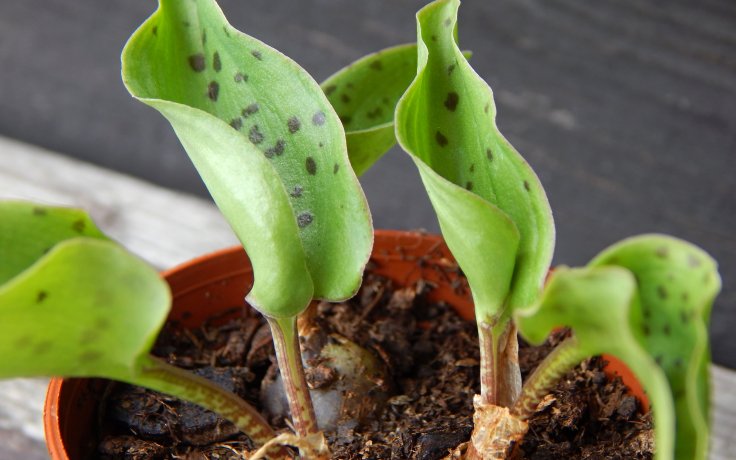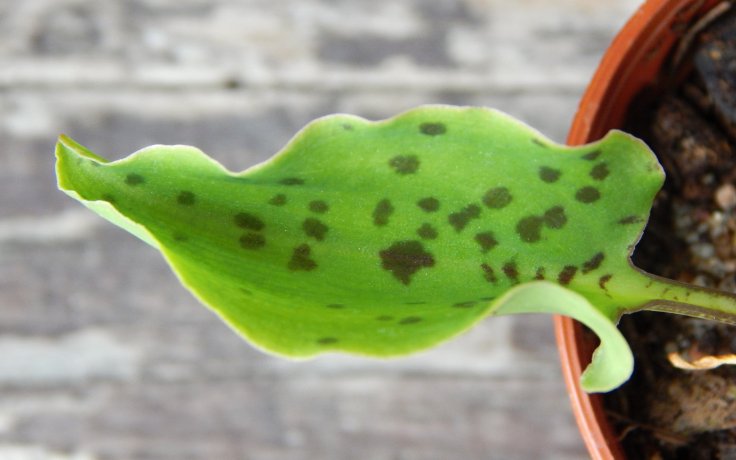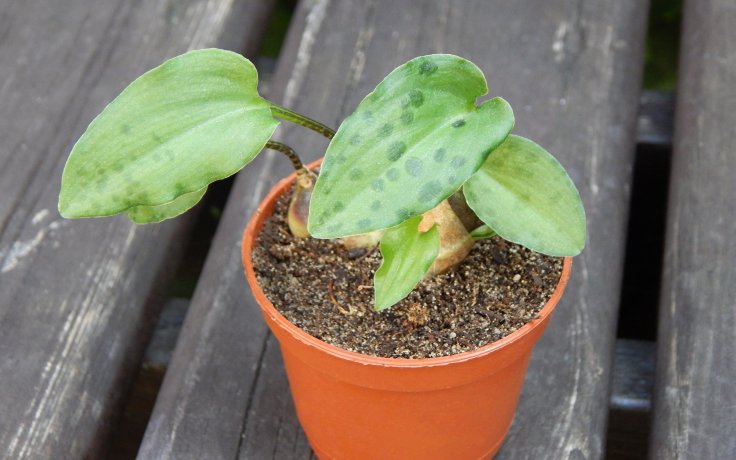- Home
- Succulents
- Ledebouria
- Ledebouria petiolata





Ledebouria petiolata
Place in a sunny location, but ideally in partial shade.
Always water a few days after the substrate has dried out. In winter, stop watering.
It can tolerate temperatures down to -9.4 °C in the short term. However, the plant is not hardy.
The visible bulbs, the atypical leaf shape and the slightly speckled patterns give the plant an exotic look and create an unusual spectacle.
Ledebouria petiolata, formerly called Drimia petiolata and Drimiopsis maculata. It is native to the coastal tropical forests and forest edges of eastern and southern Africa. It can be found in forest clearings, on the banks of watercourses and along roadsides at altitudes up to 1 350 m above sea level.
The leaves are ovate in shape, slightly wavy and pointed at the apex. They turn green with purple spots on the upper side. It is a perennial herb with an underground bulb from which up to 6 leaves grow. These leaves grow on a grooved petiole, up to 10 cm long, and together with it form ground clumps. The bulbs themselves are spherical, fleshy and mostly exposed on the surface of the ground, reaching a size of about 2,5 cm.
The straight flower stalk can grow up to 30 cm long and is topped with a whitish raceme. It flowers from September to March and the fruit is a capsule.
Watering should be limited in winter so that the leaves dry naturally and emerge again in spring. This is a natural process beneficial to the health of the plant. Ledebouria petiolata is drought tolerant and requires no special care. This makes it popular even with novice growers. Besides, it impresses with its specific leaf shape and visible bulbs, which give it a novel appearance.